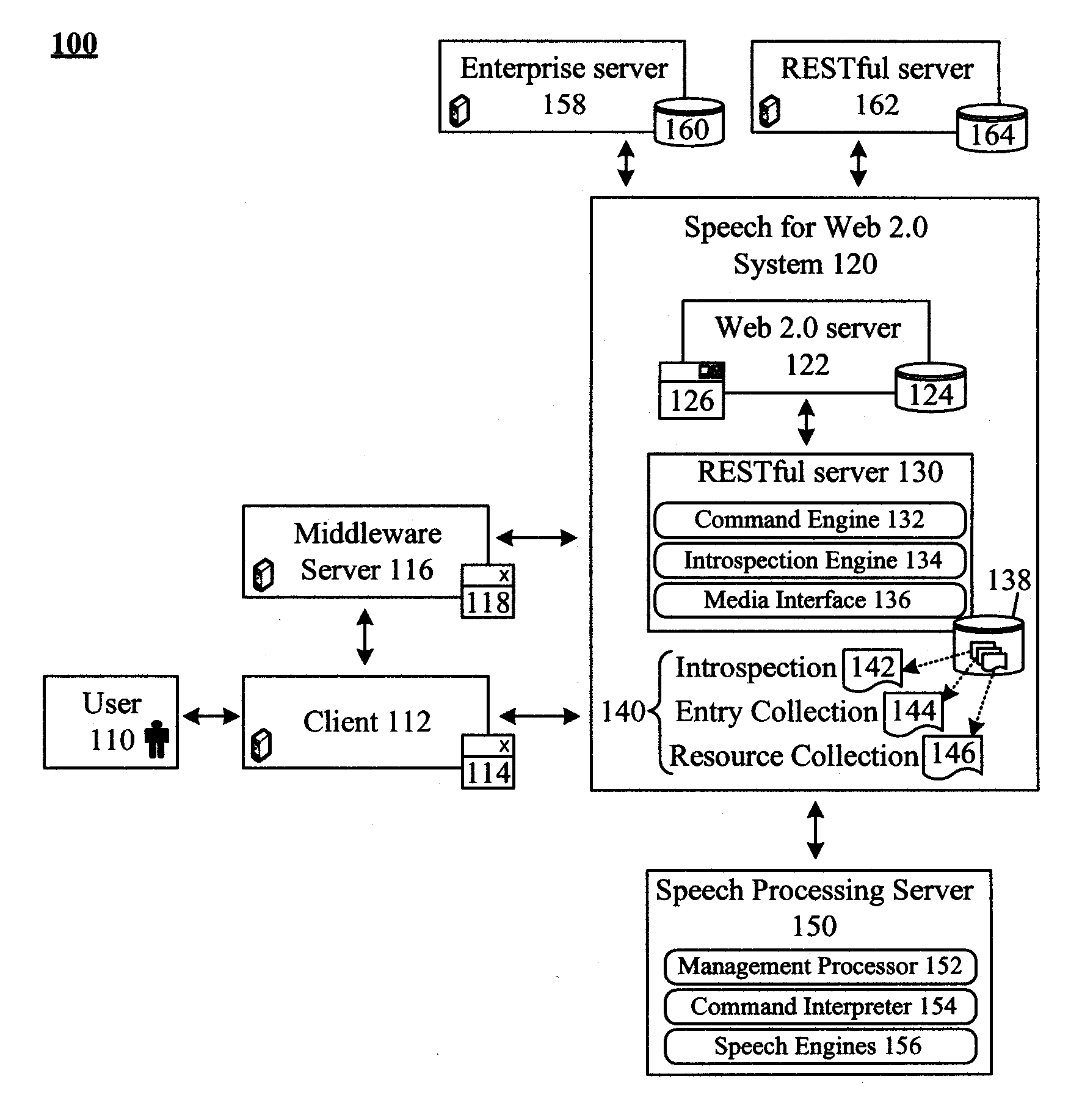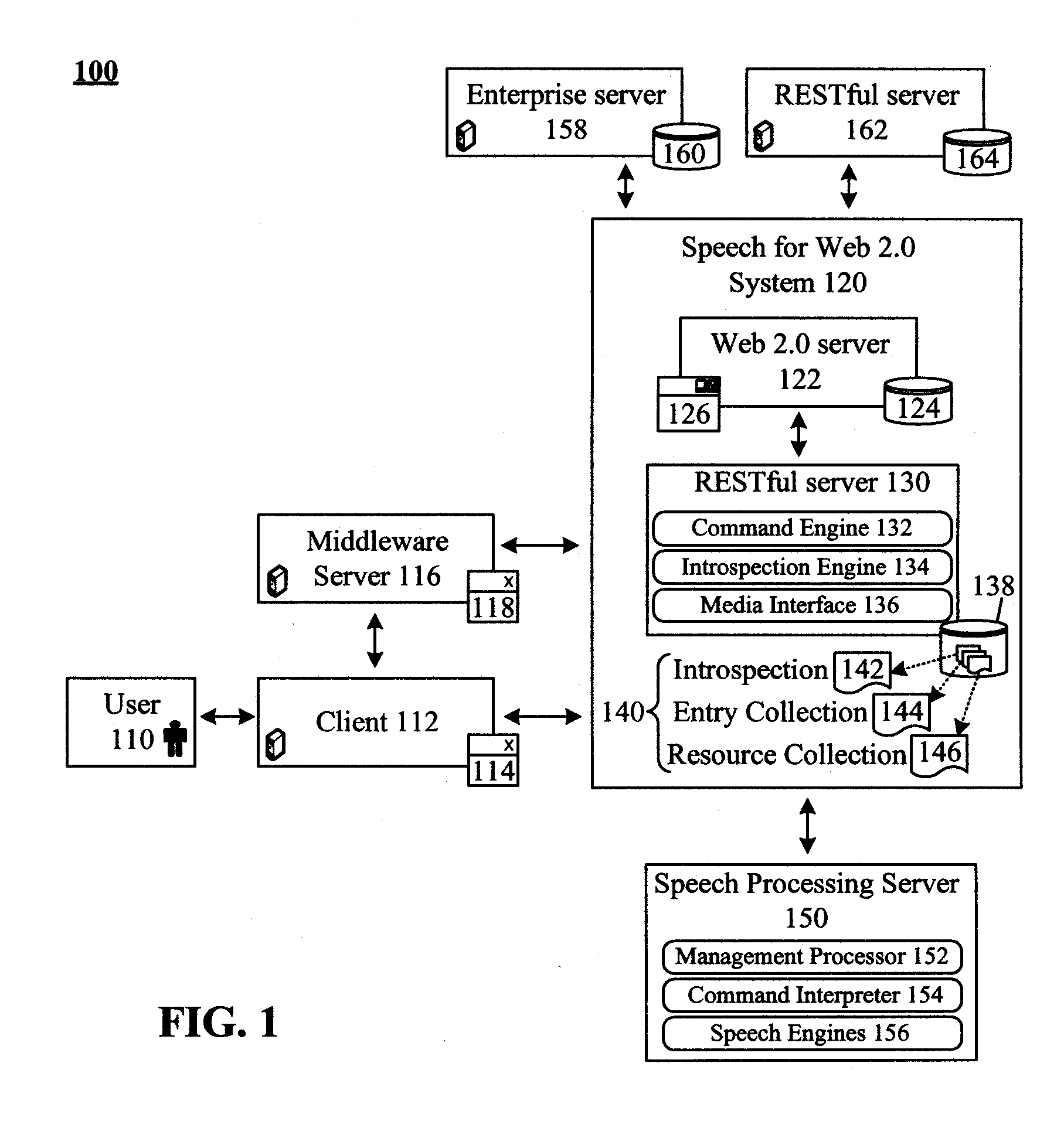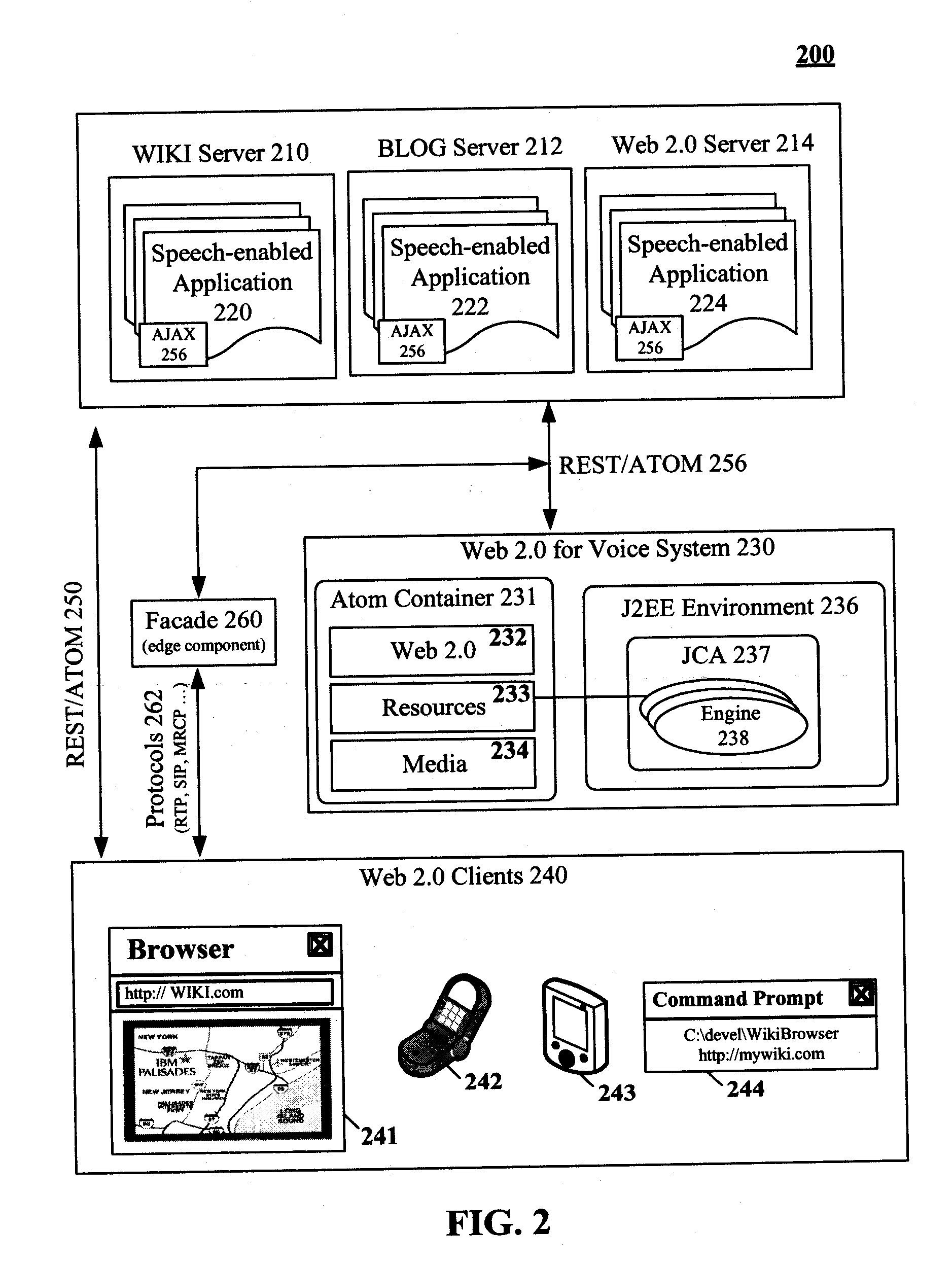Speech processing system based upon a representational state transfer (REST) architecture that uses web 2.0 concepts for speech resource interfaces
- Summary
- Abstract
- Description
- Claims
- Application Information
AI Technical Summary
Benefits of technology
Problems solved by technology
Method used
Image
Examples
Embodiment Construction
[0022]FIG. 1 is a schematic diagram of a system 100 that utilizes Web 2.0 concepts for speech processing operations in accordance with an embodiment of the inventive arrangements disclosed herein. In system 100, a user 110 can use an interface 114 of client 112 to communicate with the speech for Web 2.0 system 120, which can include a Web 2.0 server 122 and / or a RESTful server 130. When the client 112 is a basic computing device (e.g., a telephone), a middleware server 116 can provide an interface 118 to system 120. Interface 114 and / or 118 can be a Web or voice browser, which communicates directly with system 120 using Web 2.0 conventions. Applications 126, which the client 112 accesses, can be voice-enabled applications stored in data store 124. A type of browser (e.g., interface 114 and / or 118) used to access the applications 126 can be transparent to the system 120, or can be transparent at least to RESTful server 130 of system 120.
[0023]The RESTful server 130 can provide speech...
PUM
 Login to View More
Login to View More Abstract
Description
Claims
Application Information
 Login to View More
Login to View More - R&D
- Intellectual Property
- Life Sciences
- Materials
- Tech Scout
- Unparalleled Data Quality
- Higher Quality Content
- 60% Fewer Hallucinations
Browse by: Latest US Patents, China's latest patents, Technical Efficacy Thesaurus, Application Domain, Technology Topic, Popular Technical Reports.
© 2025 PatSnap. All rights reserved.Legal|Privacy policy|Modern Slavery Act Transparency Statement|Sitemap|About US| Contact US: help@patsnap.com



